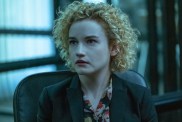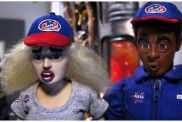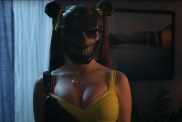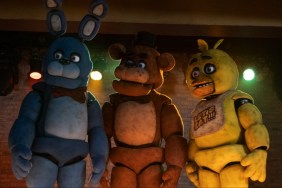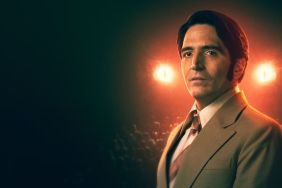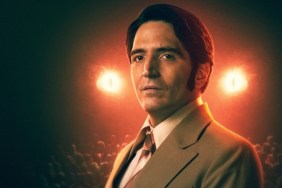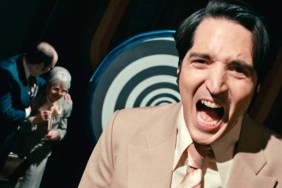
A look back at Fright Night
Its a tall order to ask that a film that speaks to horror fans at an intelligent level also embraces its nostalgia factor and manages some genuinely creepy moments. Many try to do it but few succeed like Tom Hollands Fright Night does. Released in the mid-80s when franchises were being developed out of horror classics such as The Texas Chainsaw Massacre and Halloween, Fright Night bridged the gap between classic and contemporary horror marrying tropes of gothic romance with cynical consumerism and iconic practical effects to create a genre classic widely regarded as one of the best horror films of the 1980s.
Director Tom Holland began his career in Hollywood by taking bit acting parts and eventually scripting The Beast Within (1982) before he received the daunting task of writing the sequel to Alfred Hitchcocks horror classic Psycho. Surprising many, Psycho II was well received by critics and has gone on to become a cult classic and gave Hollands career a jump start. Holland began to develop the story for Fright Night with Columbia Pictures, which agreed to finance the picture with Holland at the helm based on the strength of his previous scripts for Psycho II, Class of 1984 and Cloak & Dagger. Columbia gave Holland a limited budget and although the studio had faith in the film, they never thought it would go on to be the second-highest grossing horror film of 1985 behind New Line Cinemas genre blockbuster A Nightmare on Elm Street 2: Freddys Revenge.

Fright Night centers on horror buff Charley Brewster (William Ragsdale), who believes that his suave new neighbor Jerry Dandridge (Chris Sarandon) is actually a vampire. Charley reaches out to his hero and local horror host of the program “Fright Night” Peter Vincent (Roddy McDowall) for help, but Peter believes that Charley is a demented fan who has taken his love of horror too far. Brewsters friend Evil Ed (Stephen Geoffreys) and girlfriend Amy (Amanda Bearse) implore Vincent to help, convinced it will help Charley if his hero proves that Jerry is not a vampire. Soon, however, they all come to believe that Jerry is the undead monster Charley fears.
Holland cleverly uses Jerry, who is charming when others are around and monstrous when he and Charley are left alone, to become the catalyst for the maturity of the protagonists. Charley, who seems to have preferred to spend his time watching “Fright Night” rather than actually interacting with the world, learns through the film that all the things hes watched on “Fright Night” are real, not only the undead but death itself. Peter Vincent is shown to be a destitute coward before he decides to come to Charleys aid realizing that he can no longer go through the motions but must actually believe in what hes doing. Amy, who by all accounts is in love with Charley, grows impatient at his lack of attention and when Jerry sees her as his lost love, she also matures by getting the attention she wanted from Charley from the debonair, albeit undead, Jerry. Jerry promises Evil Ed the respect and desire he craves, but in order for him to get what he wants, Evil Ed must lose his life before he gains. The characters are consumed by vampirism, some more literary than others, but Fright Night never loses sight of them. They consistently drive the film forward through their competing goals, allowing the film to be at once both intimate and epic.

Other horror films made and released at this time were concerned with maniacs who threatened the American way of life, but Fright Night offered a reprieve. Fright Night isnt about destructive nihilism, its about redemptive heroics. While Fright Night does feature some outdated ’80s tropes, it isnt trapped by them, because Fright Night is a story that continues to be relatable and relevant proving that 30 years later a healthy love for the genre never goes out of style.
